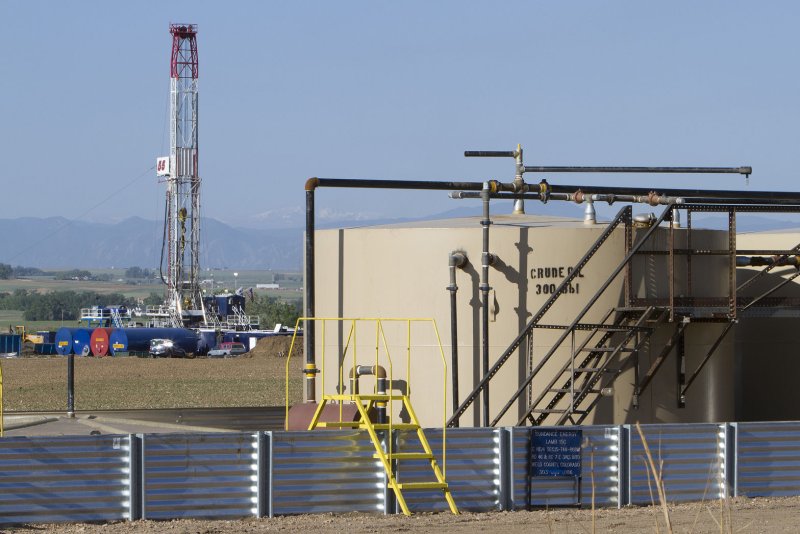U.S. oil sector remains strong at least for another decade when other key producers will gain dominance, consultant group Wood Mackenzie said. File Photo by Gary C. Caskey/UPI |
License Photo
July 16 (UPI) -- While oil production from U.S. shale basins has been relentless, it will be other producers contributing to long-term supply growth, Wood Mackenzie found.
Total U.S. oil production for the week ending July 6 averaged 10.9 million barrels per day, up about 16 percent from last year and putting the United States among the global leaders in output.
Analysis from consultancy group Wood Mackenzie said the improvement in crude oil prices, which at about $75 per barrel for Brent is 57 percent higher than at this point last year, has supported exploration and production activity in U.S. shale. That's been reflected in improved rig counts and Wood Mackenzie's report said production from shale basins in the Lower 48 states will add 4.2 million bpd of oil and condensate, a light form of oil, by 2025.
"While the pace of growth eases over the next five years, onshore Lower 48 crude oil production remains the key driver of global oil supply growth into the middle of next decade," the report read.
By the middle of the next decade, U.S. production hits 11 million bpd but peaks at 11.7 million bpd by the early 2030s, the report added. That means the Organization of Petroleum Exporting Countries and other main suppliers outside the group are important contributors to global oil supply once U.S. shale oil peaks.
"As non-OPEC production growth slows and the importance of OPEC's output increases from 2023, OPEC's role in managing prices becomes more focused on ensuring upstream investment keeps up with replacing lost barrels from onstream declines, and the growth in oil demand over the next decade or so," the report read.
Outside of OPEC, analysts at Wood Mackenzie found Brazil was one of the main contributors to long-term growth. Production there should average 130,000 bpd in annual gains to 2030.
Canada, one of the lead oil exporters to the U.S. market, should see output increase 750,000 bpd over the next 10 years.
Closer to OPEC, meanwhile, Russia, which is party to a committee monitoring OPEC levels, remains a steady producer into the early 2020s. From there, new projects like the giant Johan Sverdrup oil field offshore Norway and emerging basins offshore West Africa are key contributors.
"With demand continuing to grow through to its peak in the mid-2030s, the industry must find increasingly expensive oil to offset declines from a maturing asset base," Wood Mackenzie's report read.















